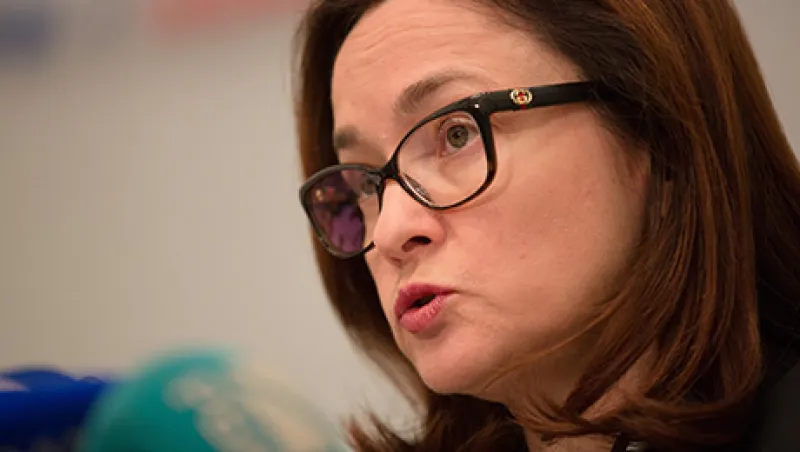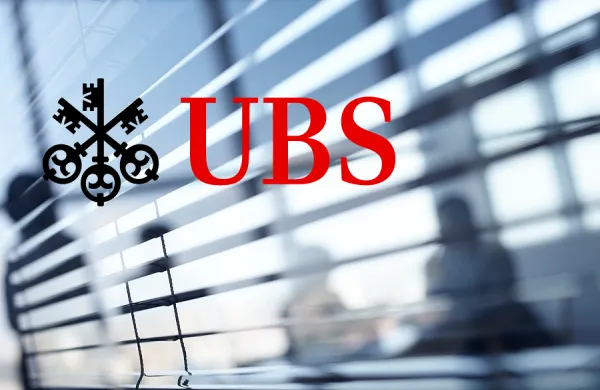The Central Bank of Russia’s surprise decision to adopt a free-floating exchange rate and stop routine intervention has given the beleaguered ruble a sharp boost but still leaves major questions about the outlook for the country’s stalled economy.
The shift in currency policy, announced on Monday, November 10, came ten days after the central bank hiked its key policy rate by 150 basis points, to 9.5 percent, to stem a surge in inflation that’s running at more than twice the official target rate of 4 percent.
The new policy established more of a two-way market in the ruble while demonstrating the central bank’s resolve. Although the central bank has abandoned routine interventions, governor Elvira Nabiullina told a state television interviewer that the CBR wouldn’t hesitate to use its $429 billion in currency reserves when necessary to “break panic and speculative demand.”
Analysts applaud the shift in tactics. “Central banks need the element of surprise on their side,” says Simon Quijano-Evans, chief of emerging-markets research at Commerzbank in London. “The CBR is starting to show its teeth.”
The change in strategy followed a disastrous October during which the CBR spent $30 billion of reserves to defend the currency only to see the ruble decline 8 percent against the dollar. The ruble gained 2.3 percent on Monday and was up 6.3 percent from an intraday low the previous Friday, but at a rate of about 46.5 to the dollar, the currency is down nearly 30 percent since the start of the year.
Russia’s economy had slowed to a crawl over the past two years, but the conflict in Ukraine, which spurred capital flight from Russia and prompted the West to impose economic sanctions, and a sharp drop in oil prices have left the economy on the verge of recession and fueled massive selling of the ruble. Even as Nabiullina was announcing the new free-float policy on Monday, the CBR released its estimate that capital flight would reach $128 billion in 2014, more than twice last year’s figure.
Prior to its recent moves, the CBR had been pumping rubles into the banking system at a key rate of 8 percent, below the inflation rate of 8.3 percent in October, while intervening in the currency market whenever the ruble dipped below a prescribed corridor. That stance made it virtually a one-way bet to short the ruble. “The CBR offered liquidity in the hope that banks would make loans, but it was much more profitable to bet on devaluation,” says Vladimir Tikhomirov, chief economist at BCS Financial Group, Russia’s top securities broker.
Nabiullina pledged during her television appearance that the central bank would stop enabling the “games” that traders were playing at its and the ruble’s expense.
Trading in rubles will still require strong nerves. Ksenia Yudaeva, the CBR first deputy governor who announced the bank’s rate hike at the end of October, said that the “nervous” forex market would stabilize only by year’s end.
“The market has never seen swings like the ones we have had lately,” says Alexei Yegorov, senior analyst at Moscow-based Promsvyazbank, Russia’s 11th biggest lender. “It’s still early to talk about a settling process.”
Russia remains vulnerable to further external pressures. Brent crude oil prices have dipped another 4 percent this month after rallying a bit in the second half of October. At $82.04 a barrel on November 11, the price of Brent crude on the ICE Futures Europe exchange was down nearly 23 percent for the year to date.
The Ukraine crisis looks to be escalating again as Kiev accuses Moscow of sending more troops and armor across its border — threatening a fresh round of Western economic sanctions against Russia. Still, the worst may be behind the ruble.
The new CBR program also includes measures to feed hard currency to Russian companies without direct sales on the market. Companies have borrowed some $600 billion from Western banks and bond markets, but sanctions have constrained their ability to refinance those obligations. Debt service needs are expected to reach a peak in December, with approximately $30 billion due from corporate Russia, calculates Dmitry Savchenko, chief Russia economist at Nordea Markets’ Moscow office.
The central bank hopes to ease the pressure with a new series of hard-currency repo auctions. The first auction will be held November 17 and offer $10 billion at a starting interest rate of Libor plus 1.5 percent, Yudaeva said during her rate hike announcement. In all, the CBR will make $50 billion available to Russian banks through the end of 2016. “$50 billion is a pretty good chunk of change,” says Per Hammarlund, chief emerging-markets strategist at Skandinaviska Enskilda Banken in Stockholm. “I agree that the CBR has been moving in the right direction.” Beyond the December repayment hump, the demands for early next year look far milder.
Hammarlund is less confident that Russia’s rate hike is stiff enough to discourage traders from borrowing rubles to bet on the currency’s decline. “The market will continue to be very volatile until it becomes very expensive to short the ruble,” he says. He believes Russia may have to follow the example of Turkey, which shocked investors with a 425-basis-point rate rise in January. That move reversed the trajectory of a lira that had sunk 14 percent against the dollar in the preceding two months.
More tightening would be painful for a Russian economy already flirting with recession, but a lesser evil than allowing an ever-shrinking ruble to fan inflation and provoke panic among retail savers, who have so far accepted the decline calmly. “The real risk is the population,” says BCS’ Tikhomirov. “If they lose faith in the currency, they could lose faith in the banking system as such.”
Devaluation has its upsides for Russia. Because the government sets taxes on oil and gas exports in dollars, revenues have risen in ruble terms, putting the budget in a healthy surplus. A cheaper ruble also boosts the profit outlook for all commodities exporters, spurring a mini bull run on the stock market. The MICEX share index rose by 7 percent in the two weeks to November 7. It was trading around 1,524 late Tuesday, up 1.3 percent for the year to date.
But economists are skeptical about the prospects for an import-substitution boom, which President Vladimir Putin’s ministers are promising as compensation for sanctions and a deflated currency. “Local producers do not have a lot of spare capacity, so to expand they need to invest, which means buying imported equipment,” Tikhomirov says. “The weaker ruble won’t help Russia escape a recession.”
The good news from the past few weeks of currency crisis is that Putin still seems committed to a market solution. Sergei Glazyev, a prominent Kremlin economic adviser, called in September for “fighting the export of capital” with a tax. But Russia’s leader has brushed off this and similar calls, leaving macroeconomic policy in the hands of liberal mandarins at the CBR and the ministries of Finance and Economic Development. He backed Nabiullina explicitly after she moved to a ruble free float. “Speculative jumps” in the currency market “should come to an end in light of the actions the central bank is taking in response,” Putin said, speaking to reporters Monday at an Asian economic summit in Beijing.
Traders may once again be realizing that the ruble can rise as well as fall precipitously. This year, during a relatively calm period between Russia’s March annexation of Crimea and the July downing of Malaysia Airlines flight MH17 over Eastern Ukraine, the currency rallied by 8.5 percent against the dollar. In 2009 it gained 25 percent over nine months as oil prices rebounded from the depressed levels that prevailed briefly after the September 2008 world financial implosion.
“The ruble rate is deeply undervalued compared to an equilibrium level,” Nabiullina said Monday. Considering that the currency is cheaper than it was in February 2009, when Brent crude traded below $50 a barrel and Russia’s economy was in the midst of an 8 percent contraction, she may have a point.






